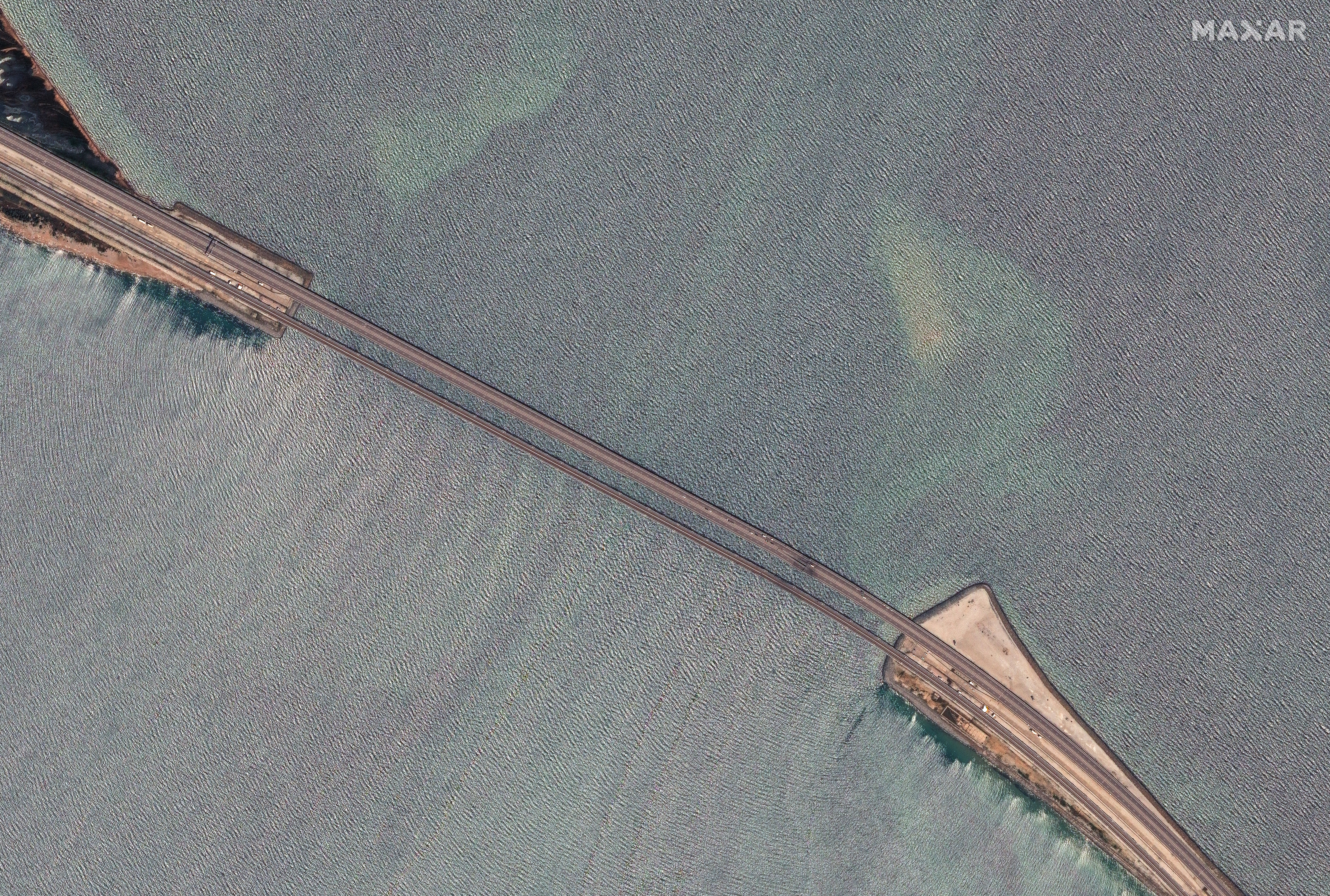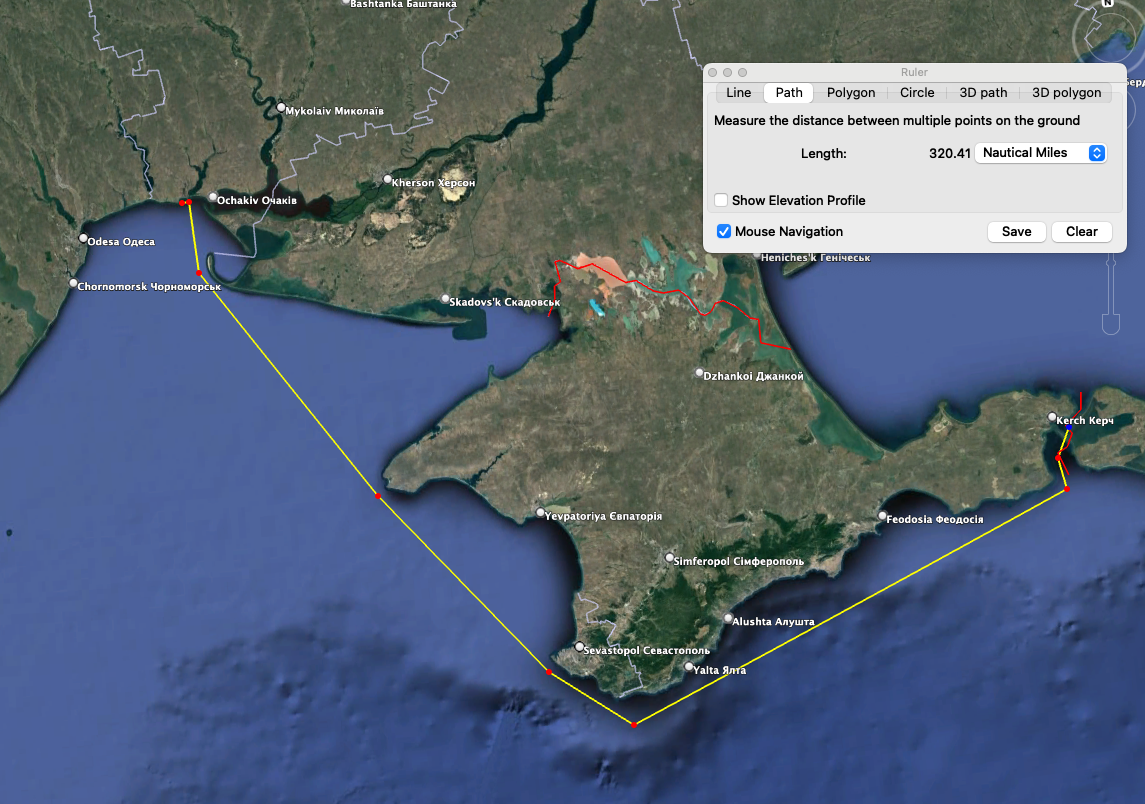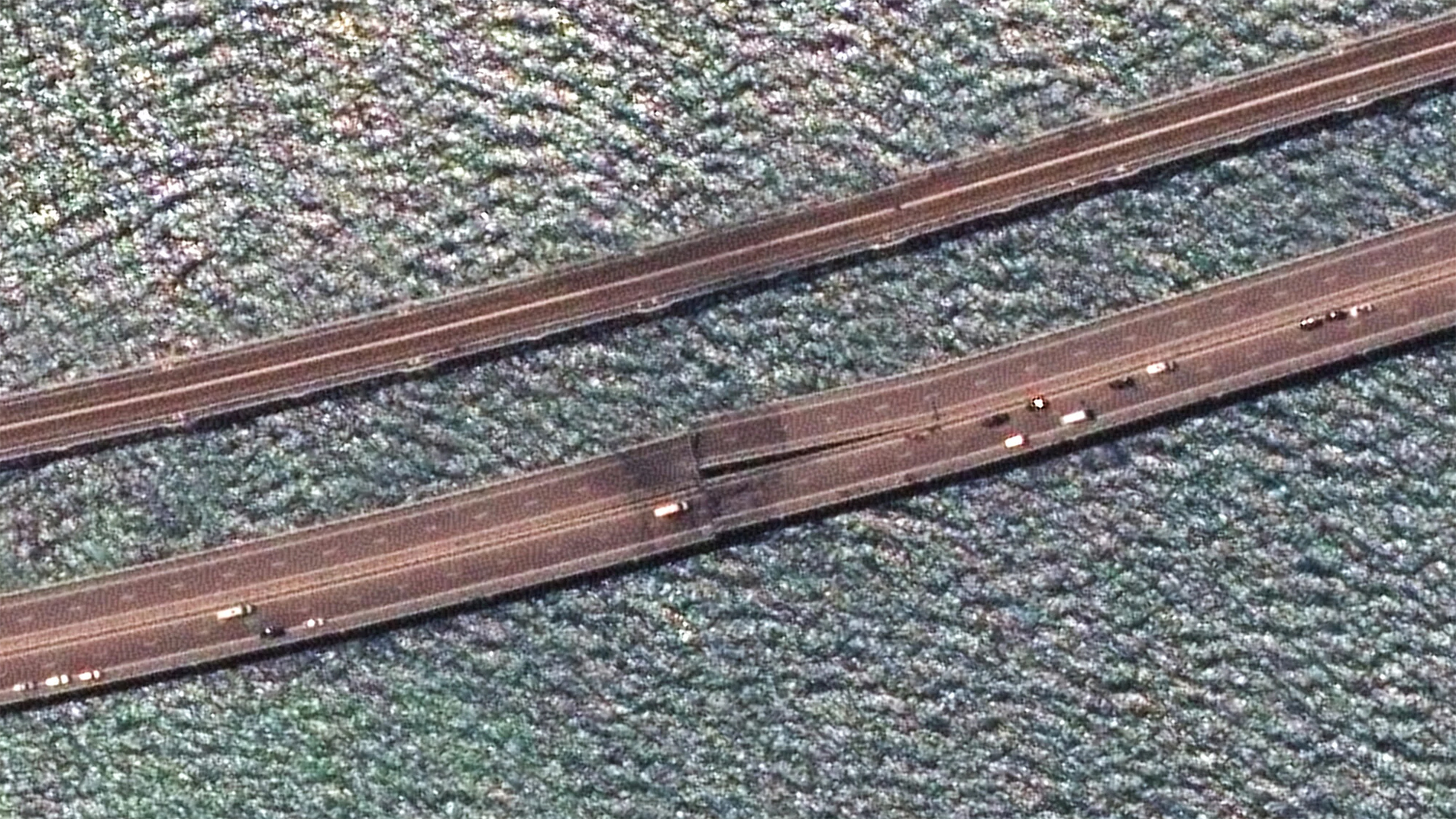The Ukrainian federal security service, known by the acronym SBU, carried out Sunday’s attack on the Kerch Bridge in cooperation with the country’s navy using uncrewed surface vessels (USVs), according to state media and many other reports. The attack badly damaged the bridge linking Russia to the Crimean peninsula it has occupied since 2014.
We must highlight that these are initial reports and there is a massive information war also being fought by both sides. The War Zone could not independently verify these claims at this time, but they have been reconfirmed by various outlets. Still, Ukraine has a history of not giving information out on high-profile long-range attack. The possibility that this is a misdirect to obscure another form of attack is very real and must be kept in mind.


Russian officials say it forced a halt to vehicle traffic and killed two motorists and injured their young daughter. Railroad traffic, across the bridge, however, continued, they say. You can read more about the strike and its potential impact in our initial coverage here.
This would mark the latest escalation in Ukraine’s use of USVs, which you can read more about later in this story.
“A nighttime attack on the Kerch Strait Bridge was a special operation conducted by the Security Service of Ukraine (SBU) and the Ukrainian Navy,” the official Ukrainian Ukrinform news agency reported Monday. “According to Ukrinform‘s sources in the SBU, the SBU and the Ukrainian Navy are behind a nighttime explosion at the bridge. Unmanned surface vessels were used to attack the bridge.”
“It was hard to get to the bridge, but this was eventually done,” the SBU said, according to Ukrinform, adding that SBU Chief Vasyl Maliuk stated that the bridge is a legitimate target for Ukraine.
The bridge was attacked by Ukrainian sea drones, an anonymous Ukrainian official told The Washington Post Monday.
CNN had a similar report, saying “a source in Ukraine’s Security Service (SBU) told CNN this attack was a joint operation of the SBU and Ukraine’s naval forces. The source spoke on condition of anonymity because they had not received authorization to speak on the record.”
The SBU’s quick acknowledgment of its role in the attack is in stark contrast to how Ukraine reacted after the previous Kerch Bridge strike on October 8, 2022. Ukrainian officials like Maj. Gen. Kyrylo Budanov, head of the Defense Intelligence Directorate, played coy about their role in that attack. It was only until recently, when, as we reported, Ukrainian Deputy Defense Minister Hanna Maliar listed that operation among Ukraine’s accomplishments during the 500 days of all-out war.
Of course, by Monday morning, Russian officials were blaming Ukraine.
The Russian Foreign Ministry condemned what it called a “terrorist attack” on the bridge.
“A criminal case was opened after the terrorist attack, and the necessary investigative actions are being taken,” the Russian Foreign Ministry said. “We are confident that those guilty will be found and will not escape justice. If the investigation finds that the surface drones that attacked the bridge are of Western origin, and that Western countries played a role in planning, sponsoring and conducting this operation, it will confirm their complicity in the Kyiv regime’s terrorist activity.”
The Foreign Ministry “strongly condemns the terrorist attack on the Crimean Bridge, which is a purely civilian facility. We hope that the international community and relevant multilateral agencies will put their foot down and give a proper assessment of yet another crime committed by the Ukrainian authorities. The damage to the Crimean Bridge caused by the terrorist attack will be repaired shortly. All attempts to disrupt the transport link to the peninsula and tear Crimea from the rest of Russia are invariably futile.”
“The Kyiv regime committed another barbaric crime,” Kherson Oblast occupation governor Volodymyr Saldo said Monday on his Telegram channel. “Damage to the structures of the Crimean Bridge is secondary. Primarily, Ukrainian propaganda mocks the death of civilians on the bridge. This shows the true face of those who are now sitting on Bankova Street in Kyiv or hiding somewhere in bunkers.”
USVs Weapon Of Choice
If the SBU claim is true this marks not just the second Ukrainian attack on the bridge, but a big increase in the capabilities of its USV fleet.
Starting last October, Ukraine began using USVs to attack Sevastopol in Crimea, home to Russia’s Black Sea Fleet. You can read more about that attack in our story here.
There have been numerous Ukrainian USV attacks since then, both in Crimea and reportedly in the open waters of the Black Sea, according to Russia.
The Russian Defense Ministry claimed that it foiled yet another aerial drone and USV attack on Sevastopol on July 16.
It is roughly 320 nautical miles (368 miles) from the closest Ukrainian-controlled shore to the Kerch Bridge, taking the most direct route around Crimea to the bridge. That is a very long-range strike that is unprecedented for Ukrainian USVs used against littoral targets. If the attacks on Russian vessels deep to the south in the Black Sea are indeed as Russia has purported them to be, such a long-range capability has been demonstrated. There is also the possibility that they were clandestinely launched much closer via a mothership vessel, but there is no evidence of that at this time.

Russia keeps a very close watch on the bridge and its approaches for just this kind of an attack. The span is heavily defended, but clearly not enough if indeed USVs got through and did this kind of damage. The low-slung area of the bridge that was hit would have maximized the impact from the blast from a explosive laden USV below.
Key Span
The Kerch Bridge is a key span for Russian logistics as it fights Ukraine’s counteroffensive pushing slowly south toward Crimea. As we mentioned earlier this morning, vehicle traffic that normally would flow across the bridge is being rerouted via routes through territory in Kherson and Zaporizhzhia oblasts that Russia occupies.
Taking out the bridge makes for a much longer trip to southern Ukraine, though if the rail lines are still operating as Russian officials claim, that would certainly reduce the impact of this attack. But beyond the inconvenience factor, it also means that Russian resupply efforts by road have to travel far closer to the front lines and well within the operational distance of Ukraine’s extended-range strike weapons. These weapons pose more of a threat to static vehicles and bridges (as we have seen targeted in the recent past) and key roadways areas though, not hitting moving vehicles.
Saldo said that he and Sergie Askenov, the occupation governor of Crimea, have been working on plans to make those routes easier to travel with the increased traffic.
Those regions “will be fully involved in the organization of traffic for people to Crimea along the land route along the Azov coast, an alternative to the Crimean bridge,” said Saldo. “Kherson region is preparing to increase the transport and passenger flow. At the moment, most of the road from Melitopol to the Dzhankoy checkpoint within the region has been overhauled, the entrances to the checkpoint have been expanded. Measures will be taken to expedite the screening of people and vehicles.”
Specialists are working on the possibility of directing part of the tourist flow through the Armyansk checkpoint, he added.
“It could be used by tourists heading to the eastern coast of Crimea,”
Meanwhile, the ferry crossing from the Krasnodar Territory has resumed its work – the first batch of passengers from the port of Kavkaz has already arrived at the port of Kerch, the Russian Defense Ministry’s Zvezda News reported on its Telegram channel Monday. “However, for now, only passengers of regular buses can use the sea route.”
Deputy Prime Minister Khusnullin said officials should know in a few hours the extent of the damage.
“I personally went downstairs and looked,” he told Zvezda News. “Now designers and builders are working out technological schemes for repairs, discussing whether it is possible to start the machines. A couple more hours – and there will be a decision. The divers are finishing their inspection of the supports.”
“Previously, the railway bridge supports were not damaged, now they are studying automobile supports. In two hours there will be information, we will confer for now, outline a plan of action,” the deputy prime minister told Zvezda.
While the ability of train traffic across the bridge will certainly help Russian logistics, it remains to be seen just how much and just how long it will take to repair the bridge after this attack.
In the wake of this attack, Russia announced it was canceling the Black Sea Grain Initiative, hammered out over the summer to allow grain and other food and fertilizer to be shipped out via Ukraine’s Black Sea ports of Odesa, Chornomorsk and Yuzhny.
There is also the possibility that Russia will carry out retaliatory strikes across Ukraine.
We are certainly be watching for future developments and will update this story when there is more information to report.
Update 4:41 p.m. Eastern:
During a televised speech Monday, Russian President Vladimir Putin vowed a response to the attack.
“The terrorist act seriously damaged the road along several spans of the Crimean Bridge, and as a result auto and railway traffic was halted.”
However, railway traffic has already been restored, he said.
“Considering that this is the second terrorist attack on the Crimean Bridge, I am waiting for specific proposals on how to improve the security of this strategically important transport facility. We discussed this in detail this morning.”
Putin added that the attack was “senseless” because the bridge hadn’t been used for military logistics for a while.
“Of course there will be a response from the Russian side,” he said. “The Defense Ministry is preparing adequate proposals.”
Contact the author: howard@thewarzone.com
.
